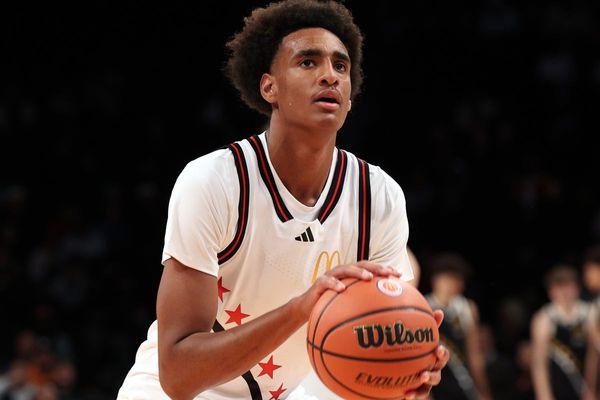The Interim Budget featuring a substantial cut of over 60% in allocations to the University Grants Commission (UGC) serves as a scathing reminder of Jacob J. Lew’s proposition that “the budget is not just a collection of numbers, but an expression of our values and aspirations”. The grant for higher education has suffered a ruthless reduction of ₹9,600 crore from the preceding fiscal year’s revised estimate, with a second consecutive year of slashes in allocations for institutions such as the Indian Institutes of Technology and and the Indian Institutes of Management.
This budgetary trend raises questions about its alignment with the overarching objectives of ‘Education 2023: Incheon Declaration,’ championed by India, seeking inclusive, equitable, and quality learning for all though a targeted allocation of 4-6% of the nation’s GDP. The Interim Budget marks a retrenchment from the lofty ambitions of the Incheon Declaration, with the current allocation standing at approximately 2.8% of the GDP.
Economic burden
While there is a marginal increase of 0.73% to school education, the Interim Budget has unflinchingly slashed the allocation to higher education by 16.8%. This will contribute to the exacerbation of the economic burden on both educational institutions and students. Despite the budget asserting a 28% increase in funding for Central universities, it is noteworthy that it is directed not to the UGC but to the Higher Education Financing Agency (HEFA). Established as a collaborative venture between Canara Bank and the Ministry of Education, HEFA offers financial support for the development and enhancement of education infrastructure through the provision of loans. This establishment has left the ‘G’ in UGC, which stands for Grants, searching for relevance, reducing it to nothing more than a statutory and regulatory body, fervently championing corporate values and ideals that revolve around minimising costs and maximising revenue. This will not only compel colleges and universities to introduce more self-financing courses but also increase the financial woes of students and these institutions’ reliance on the goodwill (read: loans) of the ‘benevolent’ HEFA. This flagrant transference of financial responsibility from the government to public institutions and their students compels universities, once revered as temples of knowledge, to don the cloak of financial stewardship, steering their central focus away from the pursuit of education. Education, in this paradigm, becomes a purchasable commodity procured through loans, obliging universities to repay via internally generated funds, typically sourced by charging students more and more.
This encumbrance will aggravate the already precarious educational condition of marginalised groups, as their Gross Enrolment Ratio (GER) falls significantly below the national average of 27.3%, with women, Scheduled Castes, and Scheduled Tribes registering a GER of 24.9%, 23.1%, and 18.9%, respectively (as reported by the All India Survey on Higher Education 2020-21). With the GER at the elementary level standing impressively at almost 100% (as reported by the Department of School Education and Literacy Survey 2021-22), a sobering reality surfaces, revealing that over 72% of students find themselves excluded from the prospect of higher education, primarily due to the fiscal deficit experienced by institutions and students. Despite the Central government’s grandiose declaration and fanfare of this period as the ‘Amrit Kaal’ of India’s development, it is noteworthy that India’s GER at the higher education level trails significantly behind the global average of 38%, marking it the lowest among BRICS nations. Regrettably, no Amrit or nectar, apart from a substantial budgetary allocation, can rejuvenate this ailing educational landscape. Robust funding stands as a crucial linchpin, propelling initiatives to bridge gaps, enhance enrolments, ensure retention, and elevate the overall quality of education, making it more equitable and inclusive.
Allocation to school education
But even the marginal allocation to the Department of School Education and Literacy carries a snag. A significant share of the allocation of ₹73,000 crore, specifically ₹6,050 crore, has been allocated to upgrade 6,448 PM-Schools for Rising India (PM-SHRI), while ₹6,399 crore has been earmarked for the construction of new Eklavya Model Residential Schools (EMRS), indicating an increase of ₹3,250 crore and ₹3,930 crore, respectively, from the previous year’s Budget. This points to a scenario where 8.3% of the total school education budget is dedicated exclusively to a mere 0.7% of schools, leading to a substantial decrease in the overall budget for existing schools and leaving them in the lurch.
The PM-SHRI schools adhere to the directives of the National Education Policy (NEP) 2020. The higher budgetary allocation to them seems to be a way of arm-twisting schools from other States/Union Territories who are sceptical about the NEP agenda to embrace it in its entirety. The intricate inquiry into how NEP 2020 institutionalises various socio-economic inequalities and exacerbates pre-existing educational challenges, while abstaining from its responsibility and accountability towards disadvantaged and marginalised social groups, is a question that concerns not only these States/Union Territories but also every other analytical mind.
Anamica is pursuing a PhD in education from IIT Bombay-Monash University; Navneet Sharma teaches in the Department of Education at the Central University of Himachal Pradesh, Dharamsala







